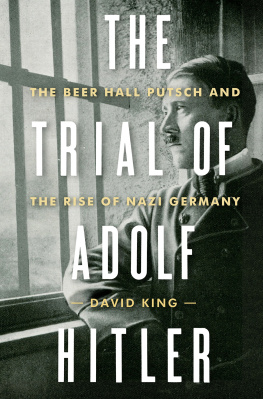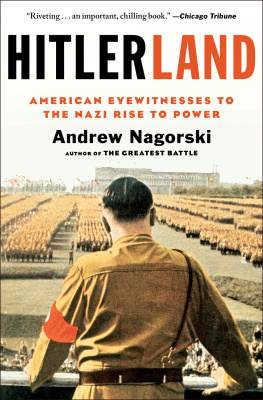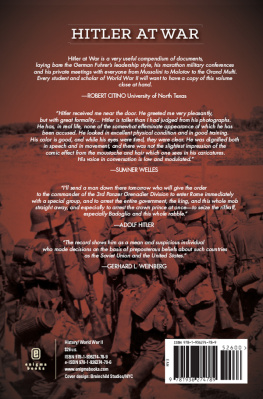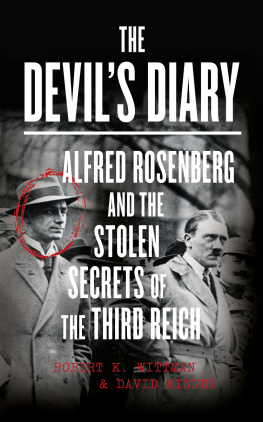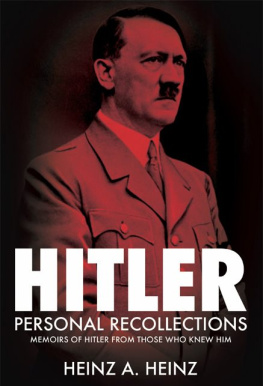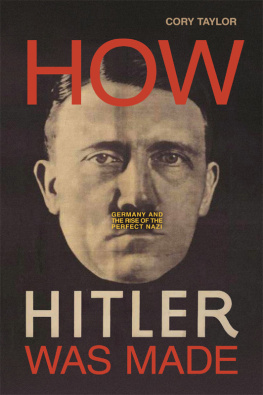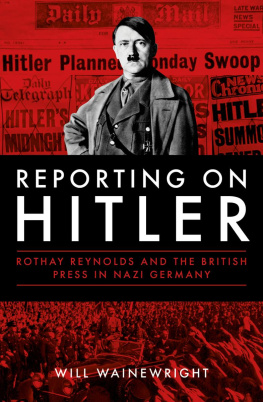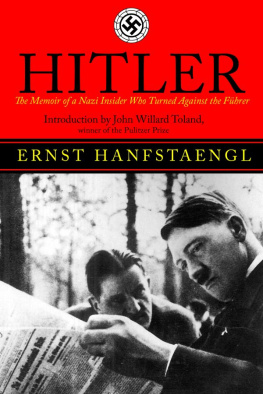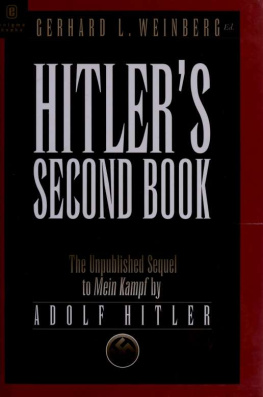
THE TRIAL
of
ADOLF HITLER
The Beer Hall Putsch
and
the Rise of Nazi Germany

DAVID KING

W. W. NORTON & COMPANY
INDEPENDENT PUBLISHERS SINCE 1923 NEW YORK LONDON
I t is a pleasure to thank the many people who helped me during the course of writing this book. First, I would like to thank my agent, Suzanne Gluck of William Morris Endeavor, for her overwhelming support of this project. Suzanne is the most spectacular agent on the planet! I am also extremely fortunate and grateful for having John A. Glusman at W. W. Norton as my editor. John is a brilliant editor and an absolute delight to work with. John and Suzanne are the dream team. This book could not have been written without them.
I want to thank the librarians and archivists at the Bayerisches Haupstaatsarchiv, the Staatsarchiv Mnchen, the Institut fr Zeitgeschichte Mnchen, the National Archives, the Hoover Institution of War and Peace, Franklin D. Roosevelt Presidential Library, Jessamine County Public Library, and many other libraries that provided interlibrary loans of rare books and microfilm. Special thanks to Dr. Christoph Bachmann, Lukas Herbeck, Andr Geister, Rita Williams, and the team at Staatsarchiv Mnchen for allowing me to have access to many valuable resources under their care, not least the prosecutor archives and the thrilling, newly discovered Adolf Hitler files from Landsberg Prison; thanks to Dr. Gerhard Hetzer and the archivists at the Bayerisches Hauptstaatsarchiv for making available a wealth of material, including the private papers of Deputy Prosecutor Hans Ehard, complete with an unpublished memoir from the trial, a collection of his interviews before his death in 1980, and many other surprises, such as Ehards own entrance card to the trial; thanks to Jeannette Eggert at the Bayerisches Hauptstaatsarchiv for her help securing the parliamentary investigation material, which uncovered so many facts about the beer hall putsch; I am grateful, too, to the always professional and friendly staff at the Institut fr Zeitgeschichte Mnchen, who likewise provided a welcoming environment in which to study their rich collections. The excitement of unwrapping a carton of papers to read an unpublished memoir of Hitlers bodyguard, Ulrich Graf, or the scribbles of the Landsberg Prison guard Franz Hemmrich, is unforgettable. Thanks, too, to the librarians and archivists at the Franklin Delano Roosevelt Presidential Library for their assistance, including providing me with a copy of Helen Niemeyers handwritten memoir describing her experiences hiding Hitler in her attic while he was on the run from the police. I would also like to thank Susan Hormuth for her expert photographing of material from the National Archives and Library of Congress, and Ron Basich for his expertise shooting material in the Robert D. Murphy Collection to help shed light on his Munich dispatches as vice consul to the Department of State. Dr. Ron Critchfield and his talented team of librarians at the Jessamine County Public Library were tireless supporters of my research, securing a number of interlibrary loans of rare material and, in many cases, valuable microfilm that ranged from German files captured by the U.S. Army at the end of the Second World War at Passau and Neumarkt-St. Veit to diplomatic and consular reports from 1920s Munich. They kept the material coming, even throughout a monumental renovation project that has rendered the library even more of a beacon in the Bluegrass. All of the library directors, librarians, and archivists certainly went out of their way to open up a treasure trove of archival material and provided yet another reason why I love being a historian.
The Trial of Adolf Hitler began as a lecture in one of my European history classes that I used to teach at the University of Kentucky. I thought of those talks often as I walked all over Munich, tracking down sites related to the story of crime and punishment at heart of the book: retracing the path of the putschists from the Rosenheimerstrasse to the Odeonsplatz; the movements of the authorities, based on police reports and eyewitness accounts, as they faced the throngs of marchers approaching the Feldherrnhalle; walking the paths of Ernst Rhms Reichskriegsflagge on the way to join Hitler and get some free beer. One of my favorite places was, no surprise, the district around the Blutenburgstrasse, where the Hitler trial took place, and where spectators, reporters, photographers, camera crews, and curiosity seekers milled about amid the armed guards, the barbed wire and other barricades. Exploring the sites of Munich 19231924 certainly has its surprises. The ground floor of the apartment building in which Hitler first lived when he moved to Munich in the spring of 1913, for instance, today hosts a bustling shop. The building in which Hitler lived during the putsch and the trial is now also a delightful boutique, this one selling Czech books, music, and art. Among many other unforgettable experiences in Munich and Bavaria, special thanks to retired Landsberg guard Josef Hagenbusch for his fascinating tales from his years at the prison and lore about wardens and staff during Hitlers stay, including Otto Leybold. I also want to thank many other people who helped and I often thought of in gratitude as I roamed the areas related to the putsch and the trial in Munich. At the top of the list are the late professors Raymond F. Betts and Jane Vance. I am deeply aware of how much I owe them, and I cherish their influence and memory. I also want to thank Professor David Olster, who not only taught me so much about the research process but also what it means to be a historian. Thanks, too, to my dear friend Matthew Slatkin for always being on the lookout for rare books to add to my Hitler library.
I want to thank Alexa Pugh and Lydia Brents at W. W. Norton in New York for all their help guiding this book on the journey from manuscript to publication. In London, I want to thank Georgina Morley at Macmillan for all her marvelous expertise and enthusiasm in editing the British edition of The Trial of Adolf Hitler. In Amsterdam, I would like to thank Job Lisman and the team at Uitgeverij Prometheus for the Dutch translation; in Barcelona, I want to thank Seix Barral for the Spanish-language edition; in So Paulo, Novo Seculo for the Portuguese translation; in Copenhagen, the team at Gyldendal for the Danish translation; in Oslo, Cappelen Damm for the Norwegian edition; and in Helsinki, Otavo for the Finnish translation. In addition to Suzanne Gluck, whom I cannot praise highly enough, I would like to express my deepest thanks to William Morris Endeavors Simon Trewin in London, Anna DeRoy in Beverly Hills, and Laura Bonner, Eve Atterbom, Clio Seraphim, and Samantha Frank in New York.
It is a joy to thank my family for putting up with my obsessive research all these years and rather frequent disappearances into 1920s Munich. As always, another big I love you goes to all of them: my daughter, Julia, now an academic star and animal lover extraordinaire; my son, Max, a fearless athlete and dazzling goal scorer, who has long counted the days until I finished the book so that we could play even more one-on-one soccer matches in the backyard; my mother, Cheryl King, for all her love and for instilling at the youngest age my first appreciation for the magic of storytelling and the power of the written word; Annika Levander, my mother-in-law. I still have the trillions of German marks (1923 currency, unfortunately) that she gave me and, even more important, all the good memories. She is deeply missed.
Next page
